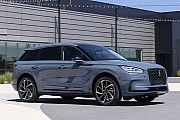history
Lincoln sprung as an independent luxury-car producer in 1917. Founded by engineering whiz Henry M. Leland after his departure from Cadillac, which he had helped co-found, the company was named Lincoln as a reminder of the admiration Leland bore for the now defunct state-leader. In a macabre coincidence, president JFK was assassinated just like Abraham Lincoln was. At the time of his death, JFK was being driven in a Lincoln Continental limousine.
However, before such drama occurred, Lincoln was a fairly small company that supplied Liberty aircraft engines for the Army during WWI. Having teamed up with son Wilfred, Leland converted his factory to manufacturing luxury automobiles right after the war. Despite Leland's skill and potential of his vehicles, the factory encountered several design-related obstacles and financial trouble that could not be overcome. Forced into bankruptcy, Leland sold his company to Ford in 1922 for $8 million.
Soon after the Ford takeover, Lincoln's first series of automobiles would enter mass production. Under Ford, Lincoln's styling problems were solved as were the financial issues experimented before. Little changes or none were made to Leland's original engines. Coupled with production cost cuts, this would allow the company to toll out some 5,500 vehicles in December, 1922.
As of 1923, newer body styles appeared, many of them having been the result of partnerships with coachbuilders such as Fleetwood and Brunn. This lead to the appearance of a diversified range of vehicles comprised of large sedans and limousines that could accommodate as many as 7 passengers. Despite the fairly big price tags these special coach-built vehicles came with, Lincoln sales did not plummet. They did just the contrary, registering a spectacular 45% increase over the previous years with 7,875 vehicles sold.
The 1924's brought forth the release of the famous Flyers that were extensively used by US Police Departments. The cars premiered some features that weren't introduced on private models until 2 years after. Two wheel disc breaks, weapon racks, armored windows and Police whistles were among the many 'accessories' Flyers came equipped with.
Probably the most famous car ever made by Lincoln sprouted in 1932 Eugene T. “Bob” Gregorie's drawing board. The later release of the Zephyr in 1936 smashed open the gates for the release of the Continental. The latter was actually a modified 1938 Zephyr Coupe whom Gregorie had sectioned and added a vertical tire mount to. The car became so successful that it sold in over 5000 units until production halted in 1948.
However, the Continental would not go down for good. It was later resuscitated through the Mark II model. By 1955, the Mark II could be purchased for a stunning $10,000, as much as a Rolls Royce cost those days.
Later designs, such as the Town Car and the bulky Navigator, aided Lincoln in becoming the best sold luxury car brand in the US by 1998. After a brief change of ownership between 1998 and 2002 when Lincoln belonged to the Premier Automotive Group, the company returned on Ford premises where it can still be found today.
Despite its tradition as a luxury car manufacturer and presidential limousine supplier, the company has experienced a severe setback in the last few years, having lost against Asian and European imports. This is mostly due to the lack of new models, issue that Ford hopes to solve by reinventing the brand. Lincoln's ascension is still unspooling through the release of models such the MKZ and MKX.
expand















